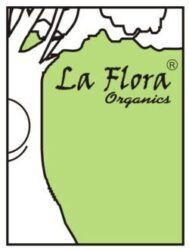The Dirty Dozen in Skin & Body Care
The largest organ of our body is the “Skin”. It absorbs 80% of what it comes in contact with. Gets into the bloodstream and thus to our system. Soaps, Shampoos, Bath Gels, lotions, toothpaste, beauty & makeup products all of which are packed in those pretty, fancy bottles & sachets endorsed by celebrities, and marketed by Multi-National Corporations. What exactly do they all contain? How do they actually put the desired effect on your skin? What magical elements do they have to transform you into beauty?
Well, researchers in the US, and Europe who have been working on the long-term effects of such products have found now that many ingredients used in most of the leading personal care products contain industrial chemicals, including carcinogens, pesticides, reproductive toxins, endocrine disruptors, plasticizers, degreasers, and surfactants.
How do we know the presence of such toxins in the product?
Simple, just read the ingredient list before buying…
Leave alone we turning beautiful, what are “they” doing to our Earth as we wash and flush them down the drain every day?
Here is a list of 12 chemicals you might want to avoid in your personal care products. They are called the “Dirty Dozen”.
1. Sodium Laureth Sulfate – (SLS)
SLS is used in cosmetics as a cleansing agent and also to make products bubble and foam (Look also for related chemical sodium lauryl sulfate). Contaminants may cause cancer.
2. BHA or BHT
Is used mainly in moisturizers and makeup as an antioxidant and preservative. BHA (butylated hydroxyanisole) and BHT (butylated hydroxytoluene) BHA are toxic to the immune system and a possible human carcinogen. Both chemicals can cause allergic reactions, are suspected of interfering with hormone function (endocrine disruption), and may promote tumor growth.
3. Triclosan
Triclosans used mainly in antiperspirants/deodorants, cleansers, and hand sanitizers as a preservative and an anti-bacterial agent. Is suspected of interfering with hormone function (endocrine disruption).
4. Coal Tar Dyes
They’re used in hair dyes (Look for p-phenylenediamine or colors identified as “C.I.” followed by a 5-digit number) Phenylenediamine, has been found to be carcinogenic. Coal tar itself is recognized as a human carcinogen and the main concern with coal tar.
5. DEA
DEA is used to make cosmetics creamy or sudsy (Look also for related chemicals MEA and TEA). DEA (diethanolamine) and DEA compounds irritate the skin and eyes and may be toxic to the immune and nervous systems. DEA compounds can also react with other ingredients in cosmetics to form carcinogenic nitrosamines.
6. Phthalate
Phthalates are used mainly in nail products and are also unlisted fragrance ingredients. It can enhance the capacity of other chemicals to cause genetic mutations, although it is not a mutagen itself. Can cause reproductive and developmental problems.
7. Formaldehyde
Releasing Preservatives – used as preservatives in cosmetics (Look for DMDM hydantoin, diazolidinyl urea, imidazolidinyl urea, methenamine, quaternion-15, and sodium hydroxymethyl glycinate). Formaldehyde is a recognized human carcinogen. They are also toxic to aquatic organisms.
8. Fragrance or Perfume
Fragrance recipes are considered a trade secret, so companies are not required to disclose fragrance chemicals in the list of ingredients. Many of these hidden ingredients are irritants and can trigger allergic attacks, migraines, and chemical-induced nerve irritation in sensitive individuals. Individual fragrance ingredients have been associated with cancer and neurotoxicity.
9. Parabens
Parabens are widely used in cosmetics as a preservative (Look for ingredients ending in “paraben” (e.g., methylparaben)). Suspected of interfering with hormone function (endocrine disruption).
10. PEG
PEG compounds – are widely used in cream bases in cosmetics (Look also for related chemical propylene glycol and other ingredients with the letters “eth” (e.g., polyethylene glycol)). May harm the nervous system and interfere with human development.
11. Petrolatum
Is used as a barrier to lock moisture in the skin in a variety of moisturizers. A petrochemical, it can be contaminated with cancer-causing polycyclic aromatic hydrocarbons (PAHs). The innocent-looking ingredient “Mineral Oil” is a petroleum derivative.
12. Siloxanes
They are used in cosmetics to soften, smooth, and moisten (Look for Cyclomethicone and ingredients ending in “siloxane” (e.g., cyclo tetra siloxane). They are also suspected of interfering with hormone function (endocrine disruption) and of liver toxicity.
About 15% of us humans are sensitive to detergents. Others are sensitive to the preservatives, colors, and fragrances used by mass marketers in both soap and detergent systems.
